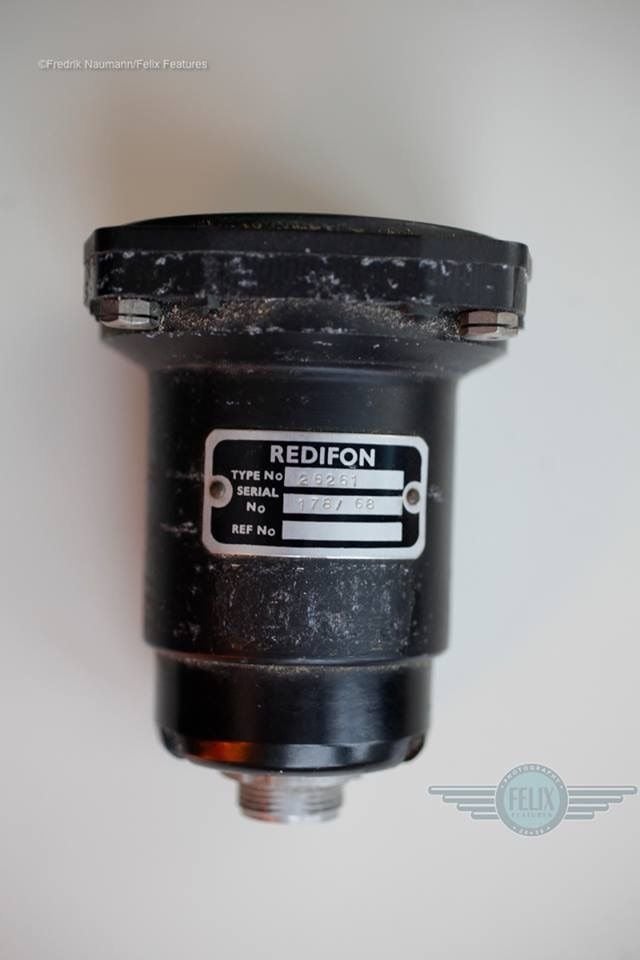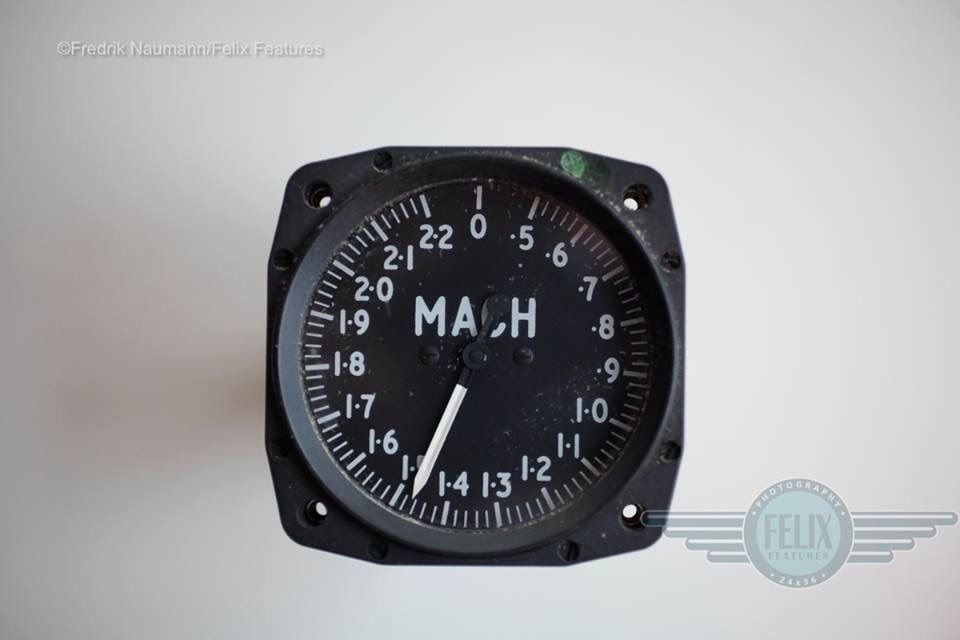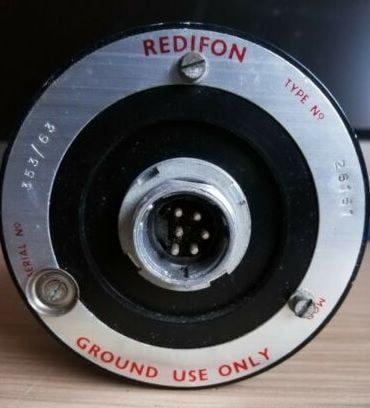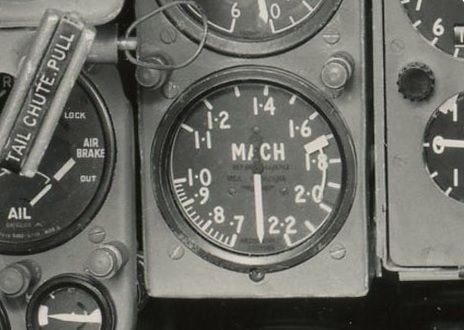Instrument ID
"Mildly" Eccentric Stardriver
Thread Starter
Instrument ID
Can anyone shed light on which aircraft this would have been fitted to? Presumably British. Thanks for any clues.




Joking aside, it appears that the F.2/F.2A had a clockwork Machmeter.
I don't know how representative this project to rebuild XN728's cockpit is:

but the M2.2 range matches, and Redifon definitely made a Lightning simulator (FAST at Farnborough at currently rebuilding one, in fact).
I don't know how representative this project to rebuild XN728's cockpit is:

but the M2.2 range matches, and Redifon definitely made a Lightning simulator (FAST at Farnborough at currently rebuilding one, in fact).
Join Date: Oct 2017
Location: UK
Posts: 5
Likes: 0
Received 0 Likes
on
0 Posts
The F2/F2A is very close to the F1A. The F2a I haven't flown.
I think this instrument might be from a British experimental aeroplane and wonder if the two images are not connected.
The fastest Lightning of them all was the F3 but flying one I only ever achieved M1.9 off a tanker and full to the brim.
I think this instrument might be from a British experimental aeroplane and wonder if the two images are not connected.
The fastest Lightning of them all was the F3 but flying one I only ever achieved M1.9 off a tanker and full to the brim.
As it's definitely from a sim it's more likely to be one for a production type rather than an experimental aircraft. Could be an F-4 sim rather than a Lightning one, I suppose.
Either way, the single, electrical connector on the back is a giveaway that it's not displaying genuine M:

Join Date: Aug 2017
Location: South
Posts: 40
Likes: 0
Received 0 Likes
on
0 Posts
The key piece of information in the photo is the serial number ends in /63 indicating that the instrument was delivered in 1963. So the system it meant for wouldíve been spec in a 55-60 time frame but ongoing in 63. Thatís too early for F4 and Concorde. So itís Lightning, or Type 188, or TSR2, or maybe a research project. The Bristol Type 188 had a strip indicator, was intended to have a max speed of Mach 2.8 (best speed achievement was 1.8 due to intake problems) and the project was near the end in 63. TSR2 had a maximum speed of Mach 2.25, in 63 reduced to Mach 1.75 by issue 2 of OR.343. Lightening was Mach 2.2 and 63 the project would have been in a significant component delivery phase, so it tops my list of suspects. A un-named research project, possible but unlikely.
The key piece of information in the photo is the serial number ends in /63 indicating that the instrument was delivered in 1963. So the system it meant for wouldíve been spec in a 55-60 time frame but ongoing in 63. Thatís too early for F4 and Concorde. So itís Lightning, or Type 188, or TSR2, or maybe a research project. The Bristol Type 188 had a strip indicator, was intended to have a max speed of Mach 2.8 (best speed achievement was 1.8 due to intake problems) and the project was near the end in 63. TSR2 had a maximum speed of Mach 2.25, in 63 reduced to Mach 1.75 by issue 2 of OR.343. Lightening was Mach 2.2 and 63 the project would have been in a significant component delivery phase, so it tops my list of suspects. A un-named research project, possible but unlikely.
As I recall it the F-4M/K didn't have a stand alone Machmeter, it had a combined ASI/Machmeter (certainly in the front seat...).
If by some chance it is it's UK F-4 related then I'd guess it was whatever was fitted at the instructors station in the sim or as fitted on the Air Intercept Trainers...
If by some chance it is it's UK F-4 related then I'd guess it was whatever was fitted at the instructors station in the sim or as fitted on the Air Intercept Trainers...
Join Date: Oct 2017
Location: UK
Posts: 5
Likes: 0
Received 0 Likes
on
0 Posts
The instrument in the illustration shows a white line limit of M1.7.
This is commensurate with the limitation of Lightning Marks F1, F1A F2 due to directional stability and radome strength considerations.
Subsequent marks with the larger square topped fin and strengthened radar housing were cleared to M2.0 ( not M2.2 as previously claimed).
It could thus indeed be from a Lightning simulator. I have flown the F1A simulator, and it is a tribute to my grey matter that I can't remember details.
This is commensurate with the limitation of Lightning Marks F1, F1A F2 due to directional stability and radome strength considerations.
Subsequent marks with the larger square topped fin and strengthened radar housing were cleared to M2.0 ( not M2.2 as previously claimed).
It could thus indeed be from a Lightning simulator. I have flown the F1A simulator, and it is a tribute to my grey matter that I can't remember details.
Here's an original in situ:

But we're still left with the mystery of the OP's photo.
Can someone explain the expanded scale between 1.0 and 1.1?
A rent in the space-time continuum perhaps?
A rent in the space-time continuum perhaps?

I assume that 50+ years ago, the Lightning's Machmeter was a purely mechanical instrument, unlike nowadays where there's an Air Data Computer in the loop doing clevr stuff.
Subsonic and Supersonic Flow through Pitot Tubes
Subsonic and Supersonic Flow through Pitot Tubes





